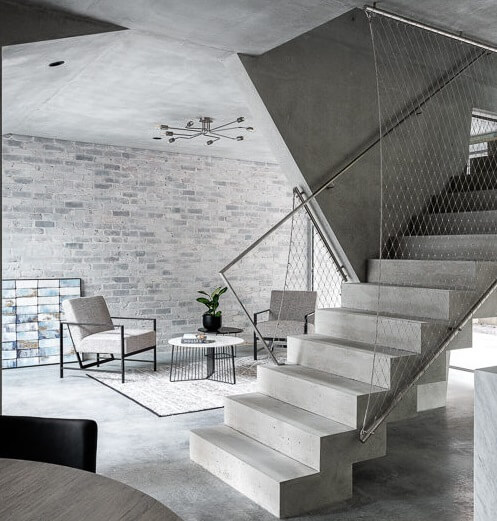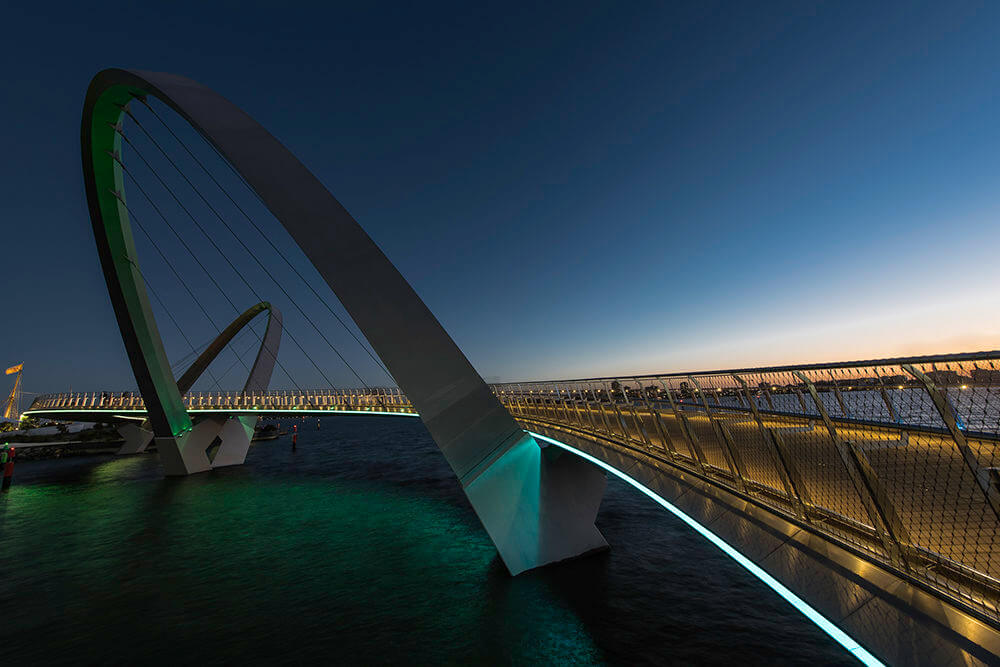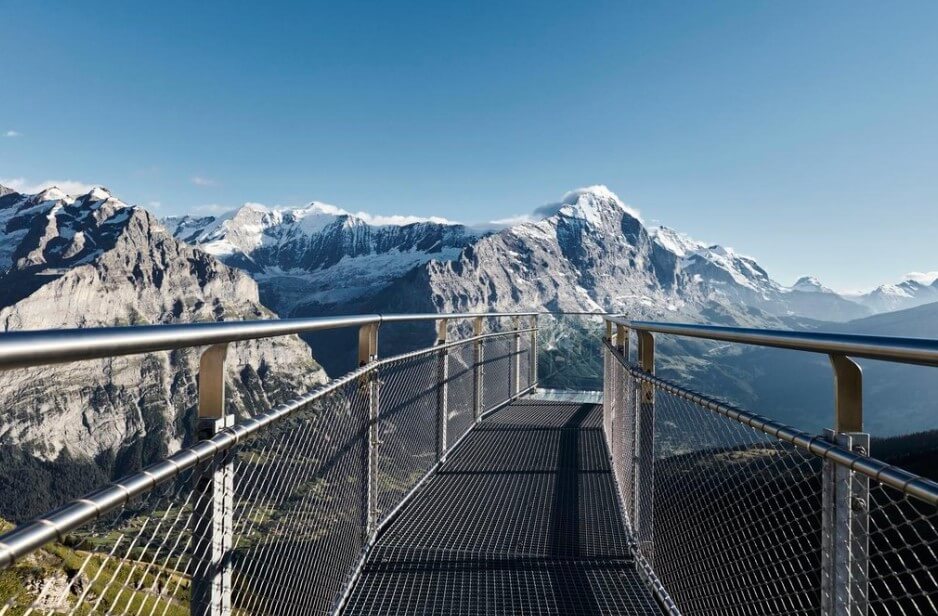Stainless steel Webnet frames enable you to take a modular approach to indoor and outdoor safety barrier applications.
They consist of a stainless-steel tube frame with Webnet mesh infill, and are fully customisable to meet project requirements. This includes the diameter of the wire mesh, the aperture size and shape, the frame dimensions, the colour, the attachment method and more.
Here’s how Webnet frames are being used in barriers across Australia.
Indoor applications
Webnet frames can be used for balustrading on indoor staircases, offering a solution that is quick to install and light in appearance. Another use is in barriers for indoor atriums, especially those requiring a full-height barrier to prevent falls and climbing.
Here are some examples.
- When the Northern Beaches Hospital building’s seven-storey atriums needed a retrofit barrier, we devised a solution using 60mm aperture Webnet mesh mounted onto stainless steel frames. Using this mounting method enabled the bulk of the work to be done off-site, which saved time and reduced disruption to the hospital’s busy day-to-day operations. The stunning result also shows how a safety barrier doesn’t have spoil an existing beautiful design – and can complement it if approached the right way!
- This residential home in North Sydney required a light and airy balustrade in keeping with the industrial design of the interior. To create the balustrade, we used custom-fabricated stainless steel tubing with 60mm aperture Webnet.
- The Melbourne School of Design at Melbourne University has a five-level atrium barrier made from masses of support cables and Webnet mesh attached to stainless steel tubing. The design allowed for the creation of a transparent low-maintenance barrier that spans the entire height and width of the atrium.

Outdoor applications for Webnet frames
Since Webnet frames and mesh are made from marine-grade stainless steel, they are highly corrosion-resistant and suitable for many types of outdoor modular installations. This includes those near salt water, such as footbridges and walkways.
The modular approach can offer an excellent solution for structures that don’t adhere to straight lines – such as the Elizabeth Quay footbridge in Perth which required a barrier to match the bridge’s curved geometry.

Another benefit of using Webnet frames on public bridges is reduced disruption, as most of the work can usually be done off-site.
This was the case for the barrier on the CBD and South Light Rail Bridge in Sydney.
While the safety requirements for this bridge were complex and required a solution to match, we were able to simplify the installation process by mounting the Webnet to the frames off-site before then transporting and fixing them to the bridge. This sped up the installation considerably.
Webnet frames have been used in major projects in Australia and all over the world, including in the First Cliff Walk in Grindelwald, Switzerland. This project comprises suspension bridges and observation platforms and walkways. The Webnet barriers on the structures allow visitors to immerse themselves in surrounds that would normally only be available to serious rock climbers and mountaineers!
If you’d like more information on how Webnet frames can optimise installation for indoor and outdoor barrier and facade applications, call us today.






































